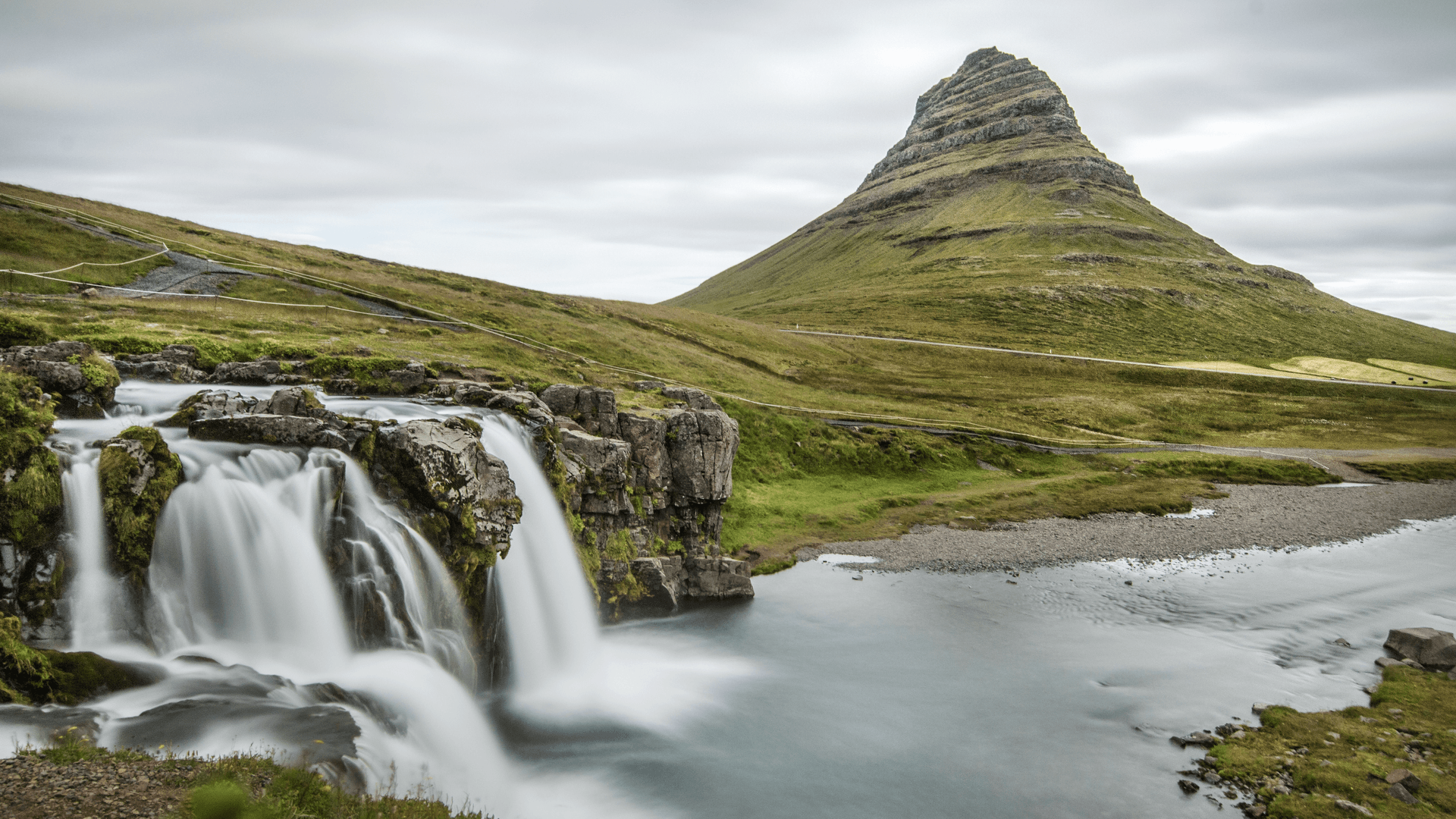You are here
Kirkjufell and Kirkjufellsfoss are among the most photographed icons of Icelandic landscape. They are located in Grundarfjörður, a small prosperous fishing town situated on the northern side of the Snæfellsnes Peninsula. Set between a high mountain range and the sea, tourists flock here in all seasons to experience the symmetrical beauty of this mountain standing high above the horizon. There is a parking lot off of Snæfellsnesvegur (the highway along the coast) with an information board and a short trail to the falls. Please remain on the worn path that leads along the bank and across a bridge. There are many viewpoints and unique perspectives to discover along your exploration.
The Kirkjufell River begins on the east part of the Helgrindur Mountain Ridge. It flows through a canyon and the Þröskuldar Cliffs to Kirkjufellsfoss. A folk tale tells of a woman who lived on the Kirkjufell farm with two sons, both of whom drowned in the waterfall while fishing. The woman therefore cast a spell saying that no fish would ever be caught in the river and that no one would drown there again. Fortunately, neither has come to pass.
Kirkjufell stands 463 meters (1,519 feet) tall between Helgrindur and the sea creating a minor peninsula into the Grundarfiord Bay and North Atlantic. The name means “Church Mountain” in Icelandic, and its profile was an inspiration for state architect Guðjón Samúelsson’s design of Hallgrímskirkja, the largest church in Iceland (Reykjavík). The summit is composed of a hyaloclastite tuff that was formed during the last 1 million years. Tuff is formed when a volcanic eruption takes place under water or ice. It has angular fragmentations that form by thermal shock and the succession of rapid cooling. This is supported by a layer of glacial till and hardened lava from the Quaternary warm period which was created during the last 2.5 million years. Below this, there is a thick sedimentary layer of sandstone/conglomerate. The next 225 meters or so down follow an alternating pattern of more Quaternary hardened lava and sedimentary rock of varying depths. This represents a cyclic growth and decay of continental ice sheets associated with climate and environmental changes. Finally, the base of the mountain is tertiary lava that was formed between 2.5 and 65 million years ago during the Cenzoic Era. From top to bottom, there are at least 20 instances of reverse magnetization indicating the interchange of north and south in the planet’s magnetic field throughout history. The mountain’s current “Church” form is a result of glacial erosion that took place during the latter part of the most recent Ice Age. There is a climbing path along the south-southwest ridge, but it should only be attempted by experienced mountain hikers. The route is rather steep, and there have been some fatalities.
Photographers flock here to capture beautiful landscape reflections in the water, magnificent sky colors at sunsets, and magical exposures during the Aurora Borealis. Game of Thrones fans will recognize Kirkjufell as the “arrowhead mountain” during season 7, when the Hound and company travel north of the wall to capture a white walker. The scenes of Kirkjufell and Kirkjufellsfoss have mesmerized people for centuries, and regardless of the season, you are bound to have your own special experience.
Logistics + Planning
Current Weather: Powered by Dark Sky






























Comments
Sign In and share them.